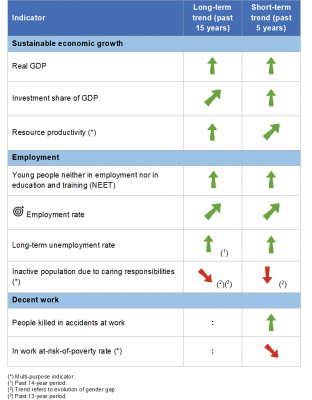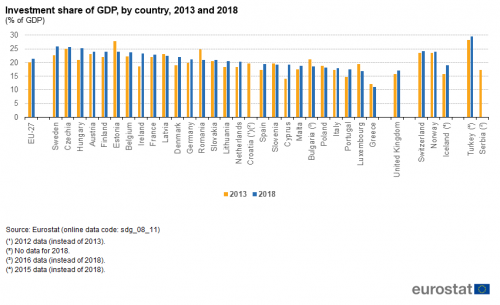Promote sustained, inclusive and sustainable economic growth, full and productive employment and decent work for all (statistical annex)
Data extracted in May 2020.
Planned article update: June 2021.
Highlights
This article provides an overview of statistical data on SDG 8 ‘Decent work and economic growth’ in the European Union (EU). It is based on the set of EU SDG indicators for monitoring of progress towards the UN Sustainable Development Goals (SDGs) in an EU context.
This article is part of a set of statistical articles, which are based on the Eurostat publication ’Sustainable development in the European Union — Monitoring report - 2020 edition’. This report is the fourth edition of Eurostat’s series of monitoring reports on sustainable development, which provide a quantitative assessment of progress of the EU towards the SDGs in an EU context.
Real GDP
Gross domestic product (GDP) is a measure of economic activity and is commonly used as a proxy for changes in a country’s material living standards. It refers to the value of total final output of goods and services produced by an economy within a certain time period. Real GDP per capita is calculated as the ratio of real GDP (GDP adjusted for inflation) to the average population of a specific year and is based on rounded figures.

Source: Eurostat (sdg_08_10)
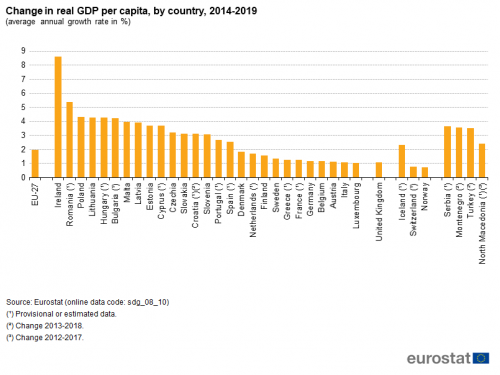
Source: Eurostat (sdg_08_10)
Investment share of GDP measures the investment for the total economy, government and business, as well as household sectors. The indicator is calculated as the share of GDP used for gross investment. It is defined as gross fixed capital formation (GFCF) expressed as a percentage of GDP for the government, business and households sectors.
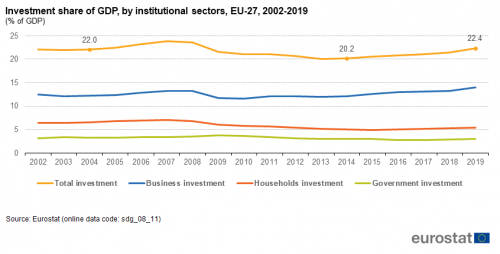
Source: Eurostat (sdg_08_11)

Source: Eurostat (sdg_08_11)
Young people neither in employment nor in education and training (NEET)
A considerable proportion of young people aged 15 to 29 in the EU are economically inactive. For some this is due to the pursuit of education and training. Others, however, have withdrawn from the labour market or are not entering it after leaving the education system. Those who struggle with the transition from education to work are captured by the statistics on young people who are neither in employment, education nor training (NEET rate). Data presented in this section stem from the EU Labour Force Survey (EU-LFS).
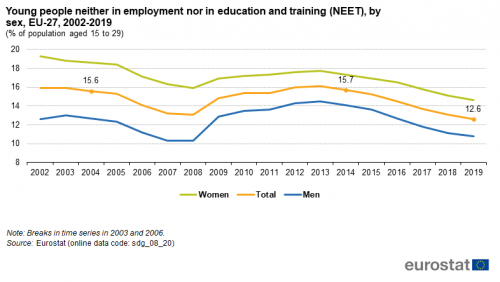
Source: Eurostat (sdg_08_20)

Source: Eurostat (sdg_08_20)
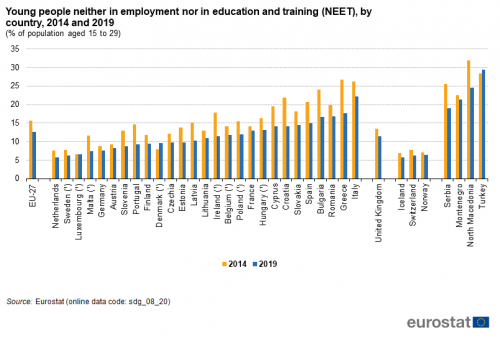
Source: Eurostat (sdg_08_20)
Employment rate
The employment rate is defined as the percentage of employed persons in relation to the comparable total population. The data analysed here focus on the population aged 20 to 64 with the view of monitoring the Europe 2020 strategy target of raising employment rates among this age group to 75 % by 2020 [1]. Data presented in this section stem from the EU Labour Force Survey (EU-LFS).

Source: Eurostat (sdg_08_30)
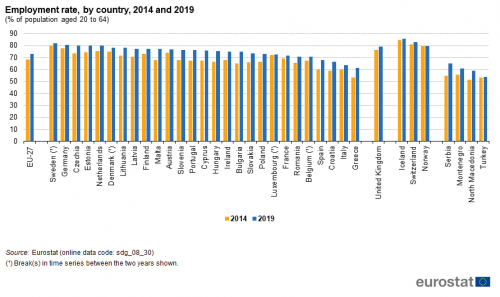
Source: Eurostat (sdg_08_30)
Long-term unemployment rate
Long-term unemployment is measured for economically active (which includes both employed and unemployed people) aged 15 to 74 who have been unemployed for 12 months or more. Long-term unemployment increases the risk of falling into poverty and has negative implications for society as a whole. Long-term unemployed people in the EU have about half the chance of finding employment as those who are short-term unemployed [2]. Data presented in this section stem from the EU Labour Force Survey (EU-LFS).
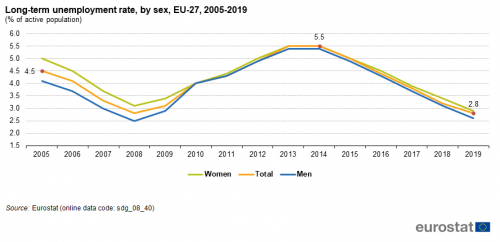
Source: Eurostat (sdg_08_40)

Source: Eurostat (sdg_08_40)
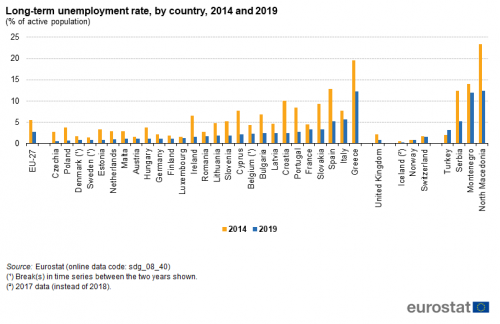
Source: Eurostat (sdg_08_40)
People killed in accidents at work
Fatal accidents at work are those occurring during the course of employment and leading to the death of the victim within one year. The incidence rate refers to the number of accidents per 100 000 persons in employment. Data presented in this section are collected in the framework of the administrative data collection 'European Statistics on Accidents at Work (ESAW)'. As an exception, accident data for the Netherlands do not include fatal work accidents on the road or other transport means, which may account for an important number of fatal work accidents in the country.
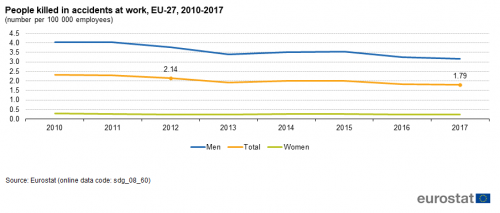
Source: Eurostat (sdg_08_60)

Source: Eurostat (sdg_08_60)
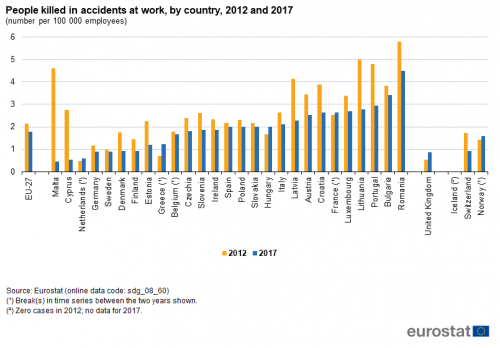
Source: Eurostat (sdg_08_60)
Footnotes
- In a majority of Member States 15- to 19-year-olds are still in education or training and few are seeking employment (even part-time). Therefore, the lower age limit of the Europe 2020 strategy’s employment target has been set at 20 years. The upper age limit for the employment rate is usually set to 64 years, taking into account statutory retirement ages across Europe. ↑
- European Commission (2016), Employment and Social Developments in Europe 2015, Publications Office of the European Union, Luxembourg, p. 13. ↑
Explore further
Other articles
Database
Thematic section
Methodology
More detailed information on EU SDG indicators for monitoring of progress towards the UN Sustainable Development Goals (SDGs), such as indicator relevance, definitions, methodological notes, background and potential linkages, can be found in the introduction of the publication ’Sustainable development in the European Union — Monitoring report - 2020 edition’.


